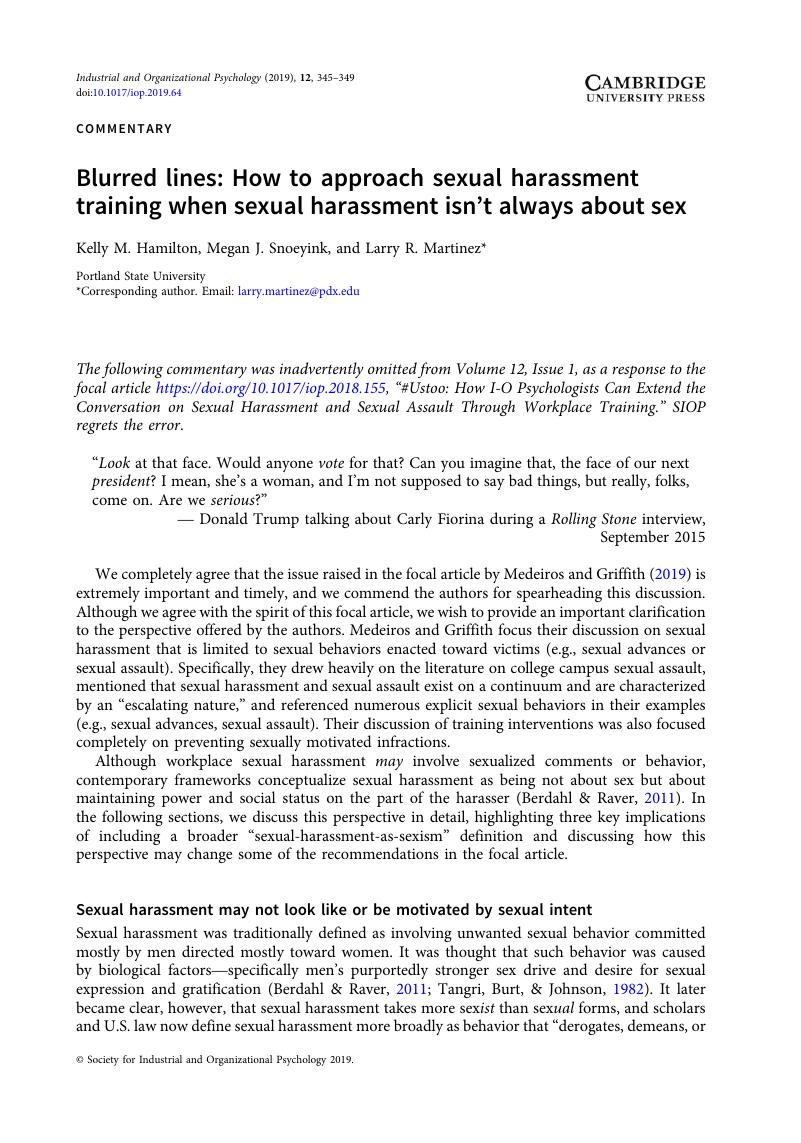Crossref Citations
This article has been cited by the following publications. This list is generated based on data provided by Crossref.
Latham, Jillian Anne
2020.
Looking beyond training as a solution to workplace sexual harassment and discrimination.
Industrial and Organizational Psychology,
Vol. 13,
Issue. 2,
p.
168.
Zelin, Alexandra I.
and
Magley, Vicki J.
2020.
Handbook of Interpersonal Violence and Abuse Across the Lifespan.
p.
1.
Sánchez, Josefa
Serrat, Sara
Castillo, Estefanía
and
Nuviala, Alberto
2021.
Confirmatory Factor Analysis and Validity of the Sexual Harassment Scale in Football Refereeing.
International Journal of Environmental Research and Public Health,
Vol. 18,
Issue. 4,
p.
1374.
Zelin, Alexandra I.
and
Magley, Vicki J.
2022.
Handbook of Interpersonal Violence and Abuse Across the Lifespan.
p.
3941.
Zelin, Alexandra I.
Branda, Brittany
and
Tino, Riley
2022.
How Do You Define Sexual Harassment?: Why Context Matters.
Violence Against Women,
Vol. 28,
Issue. 14,
p.
3438.
Del Gallo, Eva Mignot
Cardenal, Marylène
and
Walburg, Vera
2024.
Adverse Psychological Processes Associated with Sexual Harassment at Work among French Women.
Sexuality & Culture,



